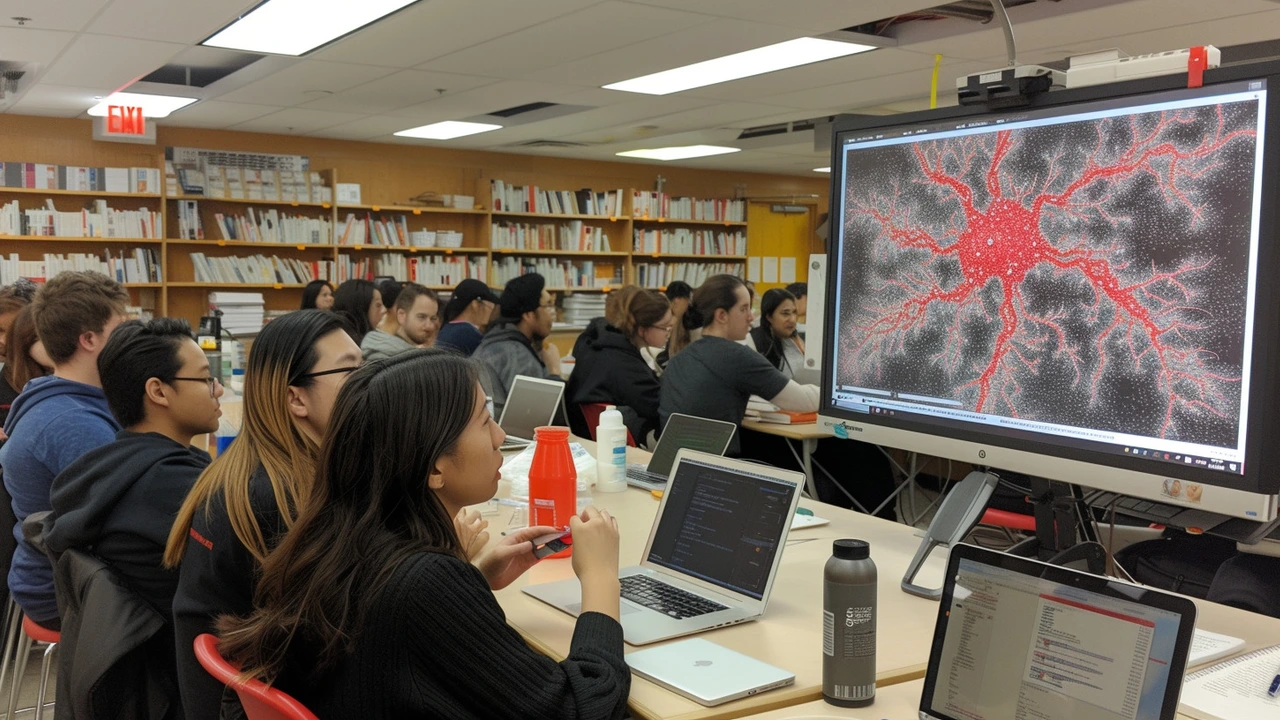Getting Started with Python for AI
I remember when I first dipped my toes into the vast expanse of the Python programming language, expecting something as terrifying as an actual python. But, unlike a jungle, I wasn't lost navigating my way around. In fact, the expedition was pleasantly easy. I'm Alaric, by the way, and in today's tech conversation, we will walk down my nostalgic lane to explore Python and its role in Artificial Intelligence (AI).
I'd like to start by saying that technology is much like a tasteful martini - shaking together the right elements can result in a cocktail worth exploring. Python is exactly that – a stir of simplicity, productivity, readability, flexibility, and a vast collection of libraries. It's easy to see why it has charmed its way into the AI community. Oh, and confession time, Python is my favourite language, and, no, it’s not because of my affinity to reptiles!
Python: A User-friendly Language
Fancy a fun fact? Python was named after the British comedy show "Monty Python's Flying Circus", and not the snake species! Now that we have broken the ice using humor (albeit questionable), let's talk about why Python is so great. The simplicity of Python lies in its syntax. It is so human-readable that an amateur programmer will face less trouble getting his code to run than he would deciding what to have for breakfast.
Let me tell you a story. I recall struggling through line after line of a ridiculously convoluted C++ code, coffee-stained notebooks screaming failure at my face. Let’s not even start with the dark days of wrestling with the semicolons. Python, my knight in shining armor, provided an escape with its elegant and forgiving syntax. Hearing of my ordeal, one would understandably question, "Why Python for AI, Alaric?" And the answer is two-pronged: simplicity and power.
Unlocking AI with Python: The Why's?
Artificial Intelligence can be as perplexing as a game of 4D chess, and Python, with its beautiful simplicity, makes such an intricate field a little less intimidating. It's like having a witty conversation with AI instead of wrestling with an unruly beast. Moreover, Python's rich repository of libraries and frameworks such as TensorFlow, PyTorch, scikit-learn, and Keras, among others, simply makes us developers chuckle with delight.
The scope of AI is already enormous and growing exponentially. From the creation of chatbots, image and voice recognition systems to chess-playing computers (AlphaZero, are you listening?), AI is ubiquitous. When used appropriately, each library and framework can be a key to unlock an aspect of this expansive world, affirming my love for Python and strengthening our AI friendship.
Python and AI: A Dynamic Duo
Once you understand your Python basics such as loops, functions, data types, etc., you are prepared to leap into the AI cosmos. Armed with your Python knowledge, brewing up AI projects feels more like a cake walk. Machine Learning, Neural networks or Natural Language Processing all become platforms to implement your innovative ideas.
This combination of Python and AI is like Batman and Robin. While Batman (AI) has the tools, skills, and the cool gadgets, Robin (Python) provides the friendly interface, making sure you do not stray into the dark alleyways of coding. With Python, I felt more like a pilot deftly navigating the AI airspace rather than a ground crew, endlessly tinkering with communication devices.
Pattern in Python: Piecing It Together
Python's importance in AI goes beyond the AI space; it also aids in understanding patterns in data - a crucial aspect of AI. Python libraries like NumPy, Pandas, and Matplotlib are great for data analysis and visualization, and this makes Python an excellent choice for AI projects. We aren't just covering ground; we're going from zero to sixty here!
Sometimes people ask me, "Okay Alaric, you've lured us into liking Python so far. But what about execution speed, which is crucial in AI?" I grin and respond with the following nugget. While conventional wisdom might point out Python's interpreted nature as a drawback concerning speed, the extensive use of libraries ensures that the intensive computation part is handled by C/C++ at the backend. So, Python effectively plays the role of the masterful conductor, orchestrating a symphony of AI components!
In this technological milieu, where AI stands as a beacon of possibilities, Python serves as the reliable compass guiding you towards achieving your AI aspirations. So here’s to Python, the power-packed simple tool that has gracefully cemented its position in AI. Cheers!

